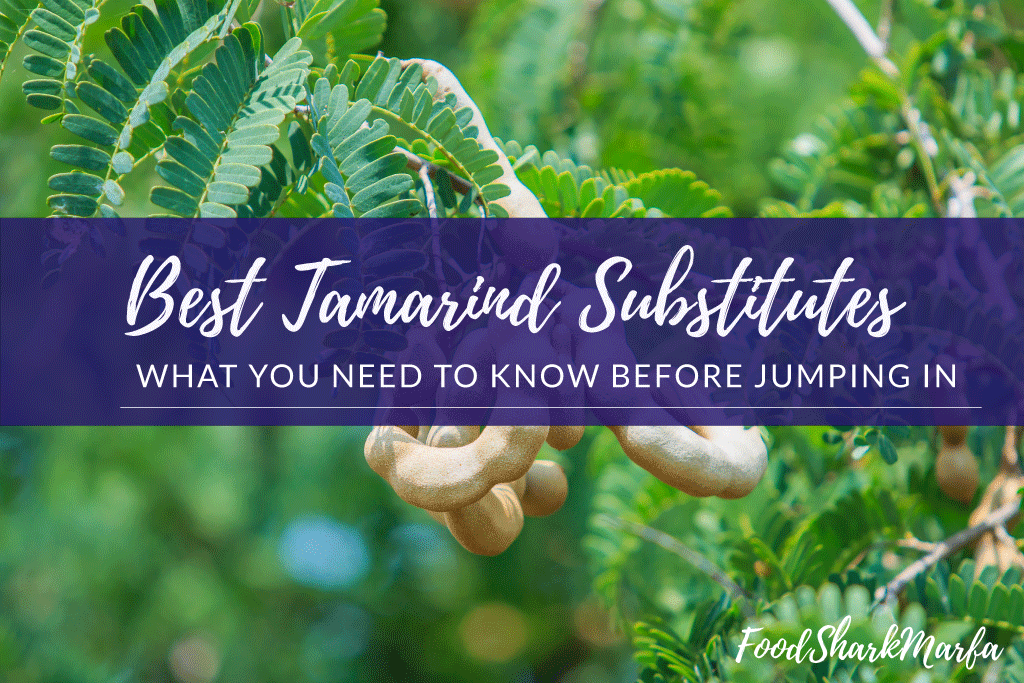
However, these citrus juices can’t provide the sweetness you can get from tamarind paste. In fact, some cooks use lemon juice instead of tamarind paste when they don’t have it. All you have to do is just squeeze out the juice and add it to your cooking. If you need the tartness from the tamarind paste, lemon and lime juices are citrus sources that are most common and readily available souring agents for Western dishes. Just cook it under medium-low heat for more than an hour until you achieve a thick consistency of a thick syrup. You can simply make pomegranate molasses at the comfort of your home with just 3 ingredients: pomegranate juice, sugar, and lemon juice. Use an equal amount of tamarind paste required from the original recipe to pomegranate molasses.

And for iced beverages and other drinks, it adds flavor with less sweetness. Its syrup is described as sweet, tangy, and flavorful which makes it a beautiful glaze for salad dressings, and a tamarind substitute for Indian and Asian vegetable and meat dishes. Pomegranate molasses moisten the dish and give a darker color. It is only made from reduced pomegranate juice at a point it reached a ruby-red syrupy form. Pomegranate molasses, a common ingredient in the Middle Eastern areas, is considered as the second-best substitute for tamarind paste because of its sweetness and sourness. Making your own tamarind paste is the best way to acquire the original flavors that you want your dish to taste like.Īnd if you happen to find a pack of tamarind pulp at your local store, then that will be easier for you so you won’t have to remove the veins of the tamarind fruit and just remove the seeds. You can store your freshly prepared tamarind paste for a few days in refrigerated conditions. And if you are not going to use it yet, you can preserve or seal your jar of tamarind by doing the traditional canning process of sealing.Keep your tamarind paste in a mason jar and store it in the refrigerator.Place the tamarind liquid in a stainless steel pot then stir it continuously until us starts to boil.Strain the tamarind through a coarse sieve to separate the fibers from the liquid.Rub or massage the pulp using your hand until the pulp is removed from its fibers.Soak the pulp in the water until it softens and cool enough to handle. Combine warm water and the seedless tamarind pulp in the bowl.Shred or tear your tamarind pulp into small chunks and put it in your mixing bowl.Stainless steel pot (Avoid using reactive metal pots made from cast iron and aluminium.) Tamarind pulp for homemade tamarind paste.īefore jumping to other tamarind substitutes, you might want to make your own tamarind paste so that your dish will have the authentic flavor of tamarind. If both options are unavailable, or if you just don’t want to spend for a jar when you only need a few teaspoons of this ingredient, you can try exploring other substitutes that will still remain as good as the original recipe. Or, you can also make your own tamarind paste at home. There are pre-made tamarind pastes that you can buy in the grocery stores, especially in the Asian section. It also offers hints of its sweetness in Thai stir-fries.Īnd did you know why your Worcestershire sauce is tangy? That’s definitely because of tamarind paste as the Worcestershire sauce’s key ingredient. The natural sourness you can get from the tamarind paste gives you the right balance of hot and spicy in curries. Tamarind paste is also used in Mexican, Latin, Vietnamese, and Caribbean cuisines. On the other hand, the tamarind paste is used for making desserts and candies. In Thailand and India, it is usually used for cooking savory dishes, and an appetizing pucker to barbecue sauces, marinades, and refreshing beverages. The tamarind pulp is thick and sticky, resembling molasses.

Basically, the pulp is removed from the pods, separated from its seeds, and it is crushed to make tamarind paste. You can actually taste the flesh, and it will give you a pleasing combination of sweet and sour or tart flavor – this is because of its natural sugar and acid. A ripe pod may have 1 to 12 full, flat, and glossy seeds embedded in the brown pulp. The mature pods are filled with edible brown to a reddish-brown acidic pulp, and it becomes brittle and easily breakable when it ripens. It’s a culinary staple in India, Thailand, Mexico and the Caribbean. The tamarind fruit, also known as the Indian date, is brown and its curved pods grow from 3 to 8 inches long.

The tamarind tree is commonly grown in the tropical areas of the world. This ingredient is derived from the tamarind fruit which grows from the evergreen tree called the tamarind. The secret to delicious pad Thais, curries, chutneys, agua fresca, tangy stir-fries, sweet or sour juices or carbonated drinks are achieved with the wonders done by the tamarind paste.


 0 kommentar(er)
0 kommentar(er)
